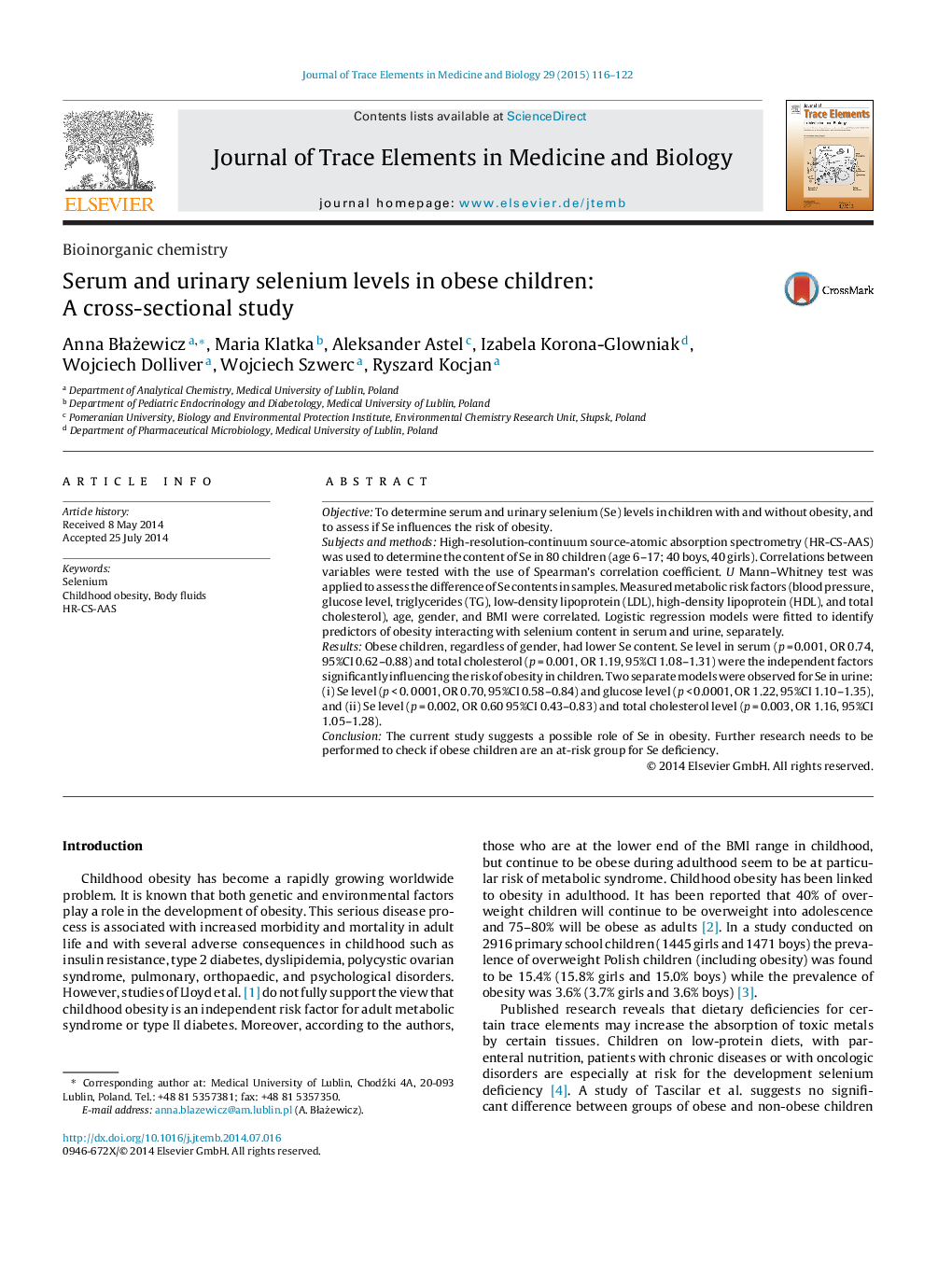| کد مقاله | کد نشریه | سال انتشار | مقاله انگلیسی | نسخه تمام متن |
|---|---|---|---|---|
| 1227351 | 1645361 | 2015 | 7 صفحه PDF | دانلود رایگان |
• Selenium was determined in urine and serum of obese children by HR CS AAS.
• We found differences in Se concentrations between healthy and obese children.
• Levels of Se correlated with selected metabolic risk factors, age, gender, and BMI.
• Lower urinary and serum Se levels were associated with excess obesity risk.
ObjectiveTo determine serum and urinary selenium (Se) levels in children with and without obesity, and to assess if Se influences the risk of obesity.Subjects and methodsHigh-resolution-continuum source-atomic absorption spectrometry (HR-CS-AAS) was used to determine the content of Se in 80 children (age 6–17; 40 boys, 40 girls). Correlations between variables were tested with the use of Spearman's correlation coefficient. U Mann–Whitney test was applied to assess the difference of Se contents in samples. Measured metabolic risk factors (blood pressure, glucose level, triglycerides (TG), low-density lipoprotein (LDL), high-density lipoprotein (HDL), and total cholesterol), age, gender, and BMI were correlated. Logistic regression models were fitted to identify predictors of obesity interacting with selenium content in serum and urine, separately.ResultsObese children, regardless of gender, had lower Se content. Se level in serum (p = 0.001, OR 0.74, 95%CI 0.62–0.88) and total cholesterol (p = 0.001, OR 1.19, 95%CI 1.08–1.31) were the independent factors significantly influencing the risk of obesity in children. Two separate models were observed for Se in urine: (i) Se level (p < 0. 0001, OR 0.70, 95%CI 0.58–0.84) and glucose level (p < 0.0001, OR 1.22, 95%CI 1.10–1.35), and (ii) Se level (p = 0.002, OR 0.60 95%CI 0.43–0.83) and total cholesterol level (p = 0.003, OR 1.16, 95%CI 1.05–1.28).ConclusionThe current study suggests a possible role of Se in obesity. Further research needs to be performed to check if obese children are an at-risk group for Se deficiency.
Journal: Journal of Trace Elements in Medicine and Biology - Volume 29, January 2015, Pages 116–122
